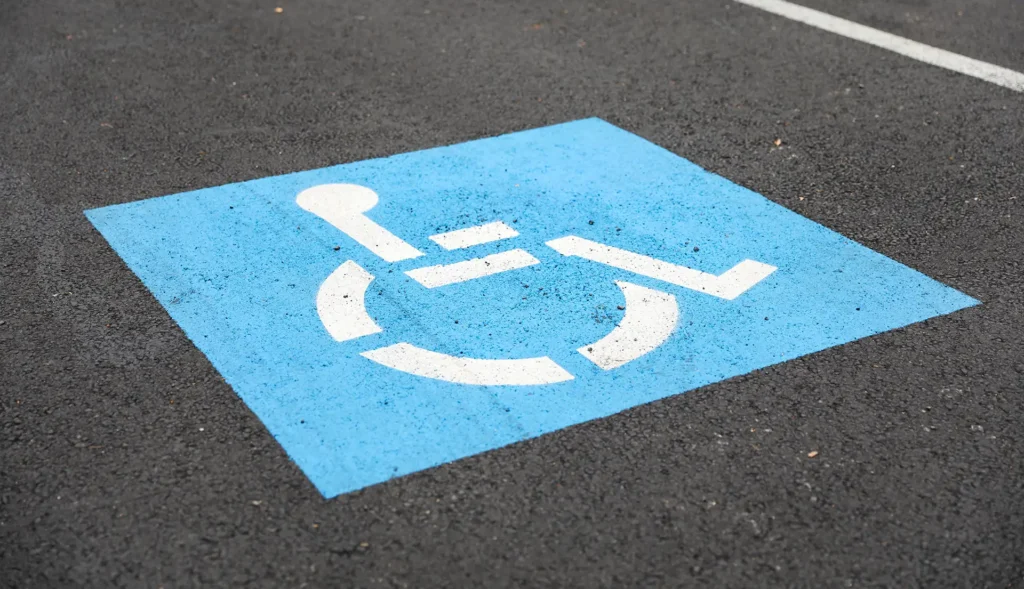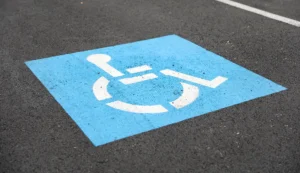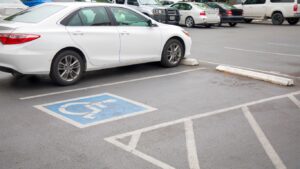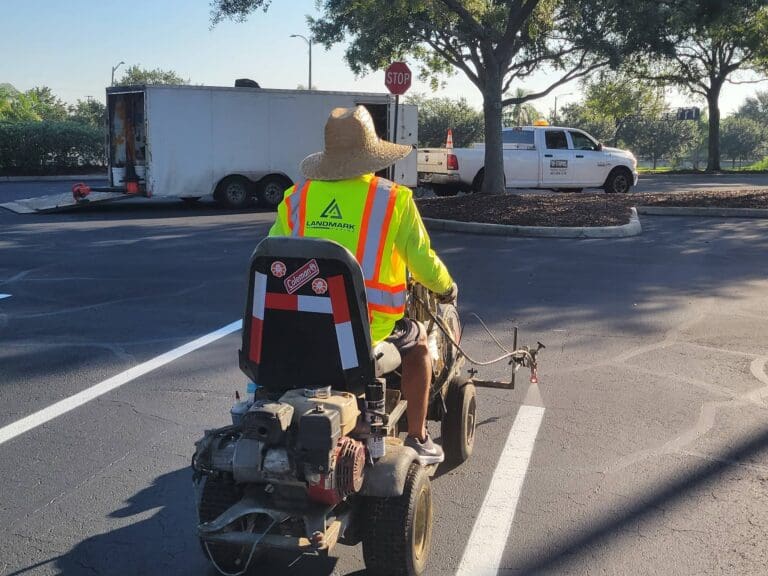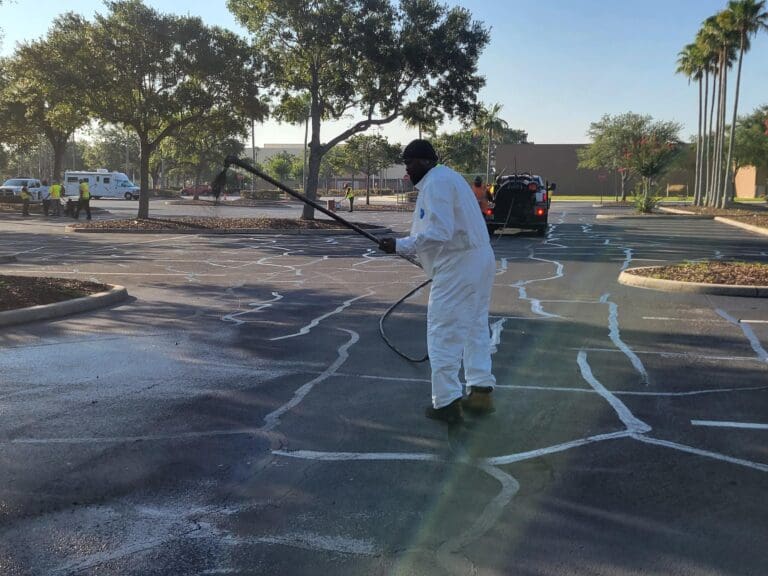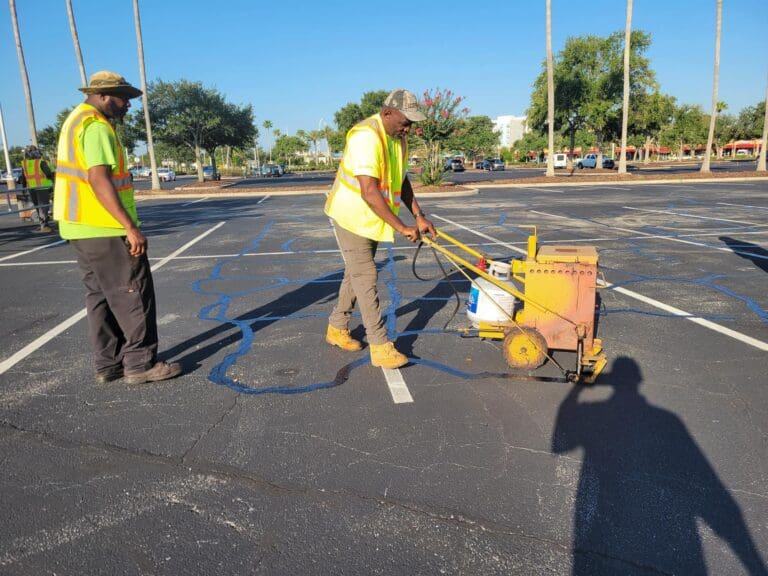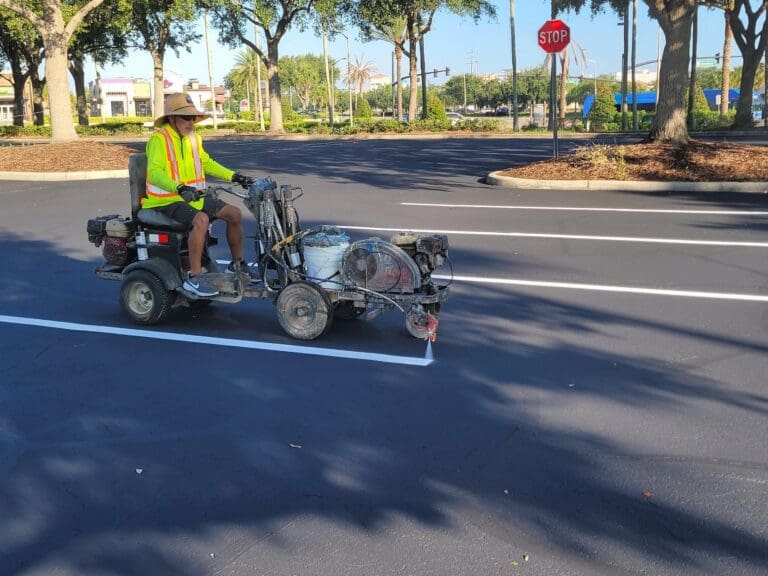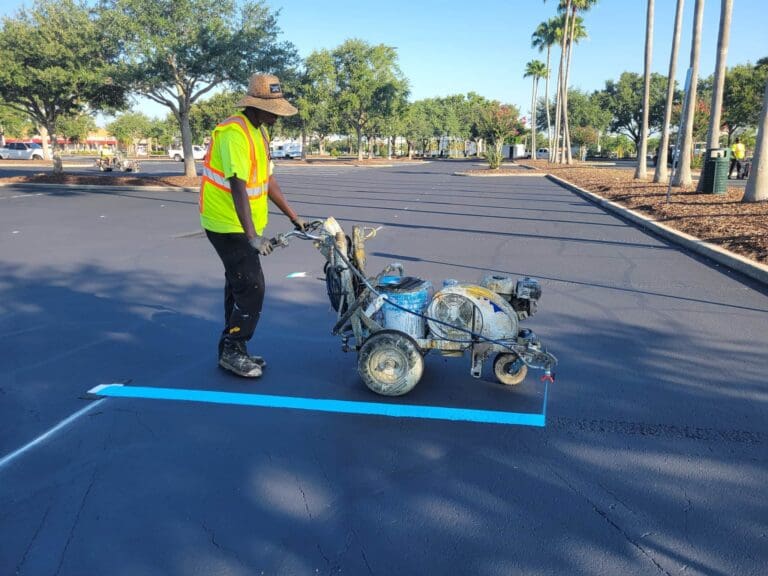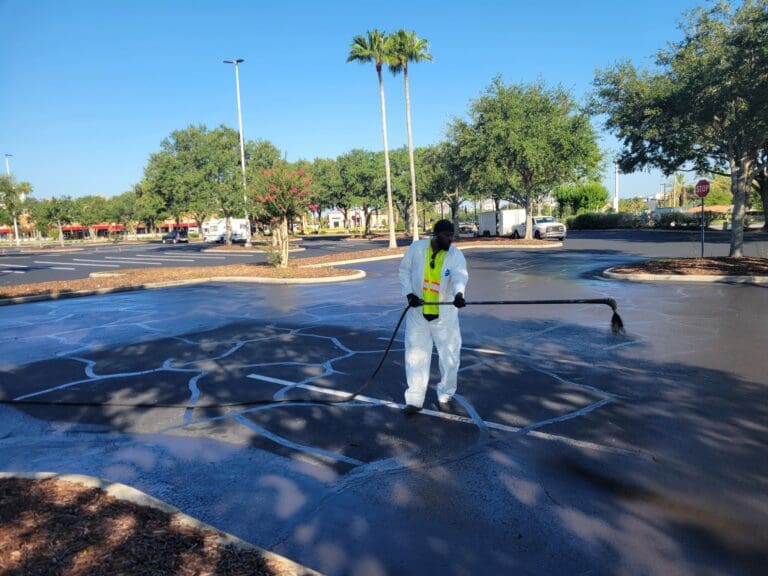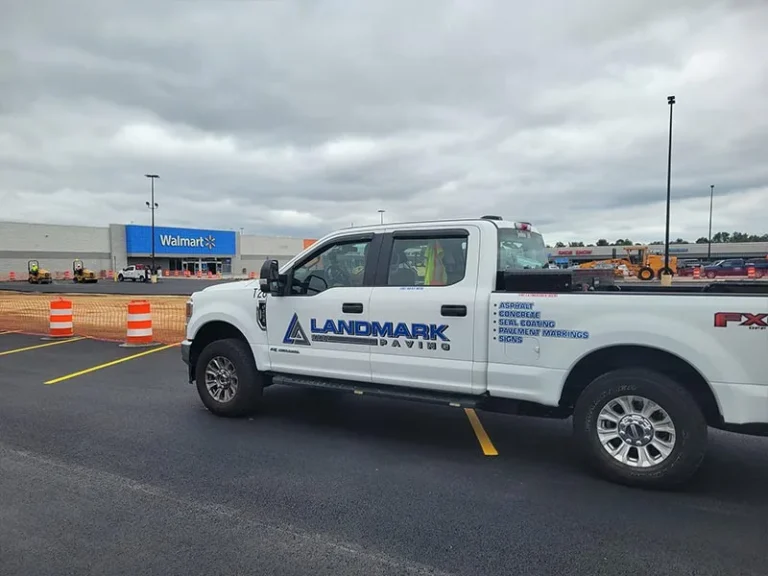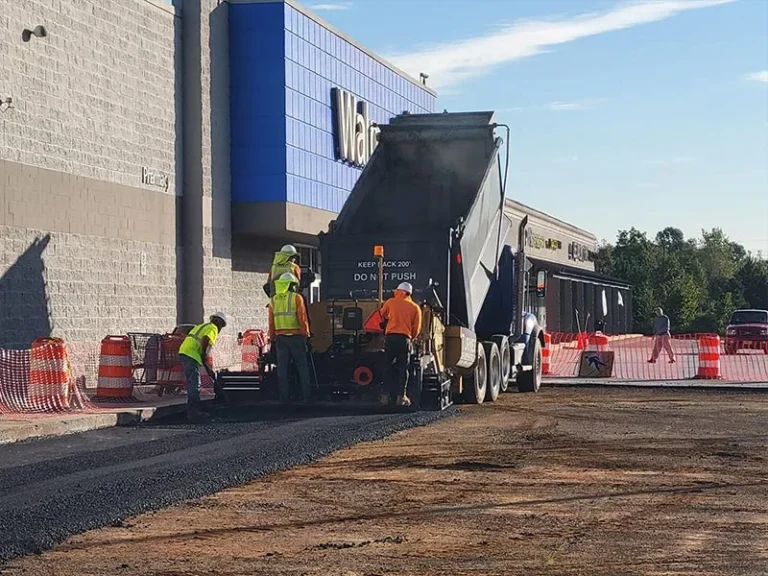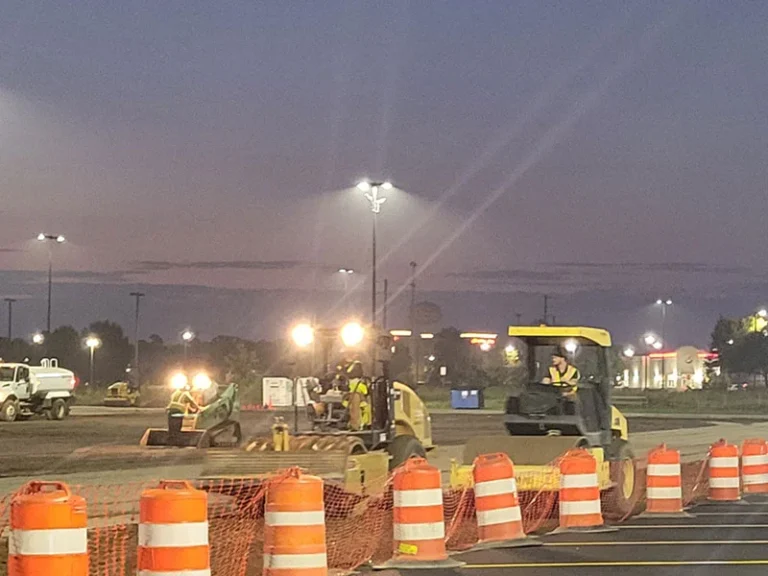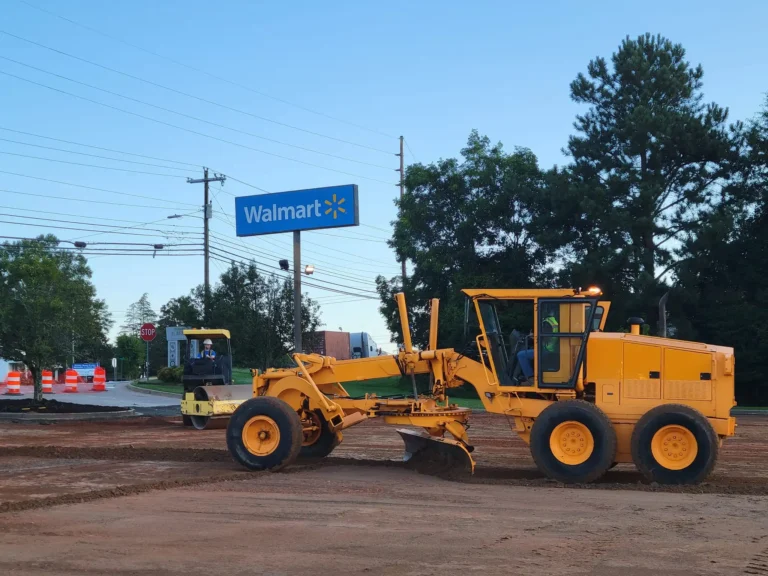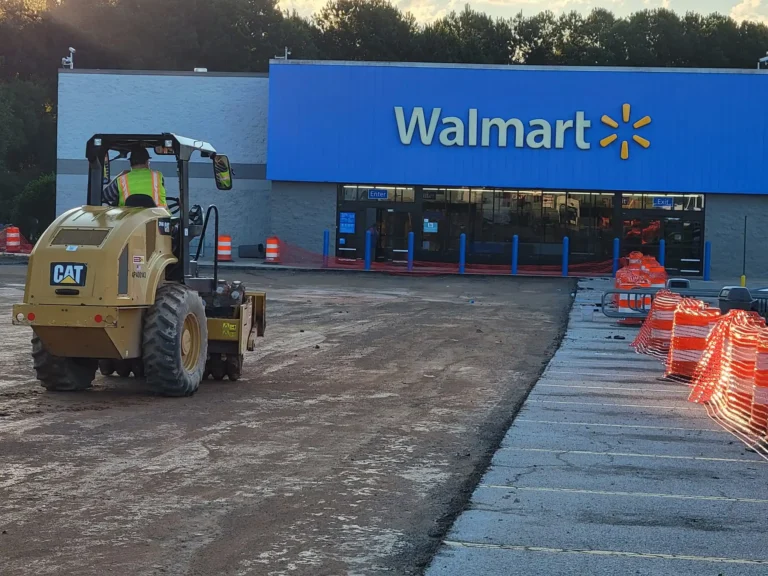Creating compliant accessible parking spaces requires far more than simply painting a wheelchair symbol on the asphalt and calling it a day. Property owners in Cincinnati must follow federal rules, Ohio state laws, and local requirements to stay compliant. If your business ignores ADA parking lot compliance, you can face hefty fines and even lawsuits from people who are denied proper access.
What Is ADA Parking?
The Americans with Disabilities Act (ADA) is a law that requires businesses to make their facilities accessible to individuals with disabilities. When we talk about ADA parking, we refer to ensuring that everyone can visit your business, regardless of whether they walk, use a wheelchair, or need other assistance to get around.
If you operate a business where customers visit—such as a doctor’s office, retail store, restaurant, or office building—you must provide accessible parking spaces for individuals with disabilities. This includes ensuring that the spaces are wide enough to accommodate wheelchair ramps, are conveniently located near your entrance, and are clearly marked as reserved for individuals with mobility impairments.
How Many Accessible Spaces Do You Need?
It depends. Smaller lots need fewer accessible spaces, and bigger lots use percentages. Each parking lot gets counted separately, so if you have multiple lots, you need to figure out each one individually. Some accessible spaces also require extra width for vans.
Working with local ADA compliance experts ensures that you get it right the first time.
Total Parking Spaces | Regular Parking Spaces | Van Spaces |
1-25 | 1 | 1 |
25-50 | 2 | 1 |
51-75 | 3 | 1 |
76-100 | 4 | 1 |
101-150 | 5 | 1 |
151-200 | 6 | 1 |
201-300 | 7 | 2 |
301-400 | 8 | 2 |
401-500 | 9 | 2 |
500-1000 | 2% of your total spaces | 1 out of every 6 |
1001+ | 20, plus 1 for every 100 more | 1 out of every 6 |
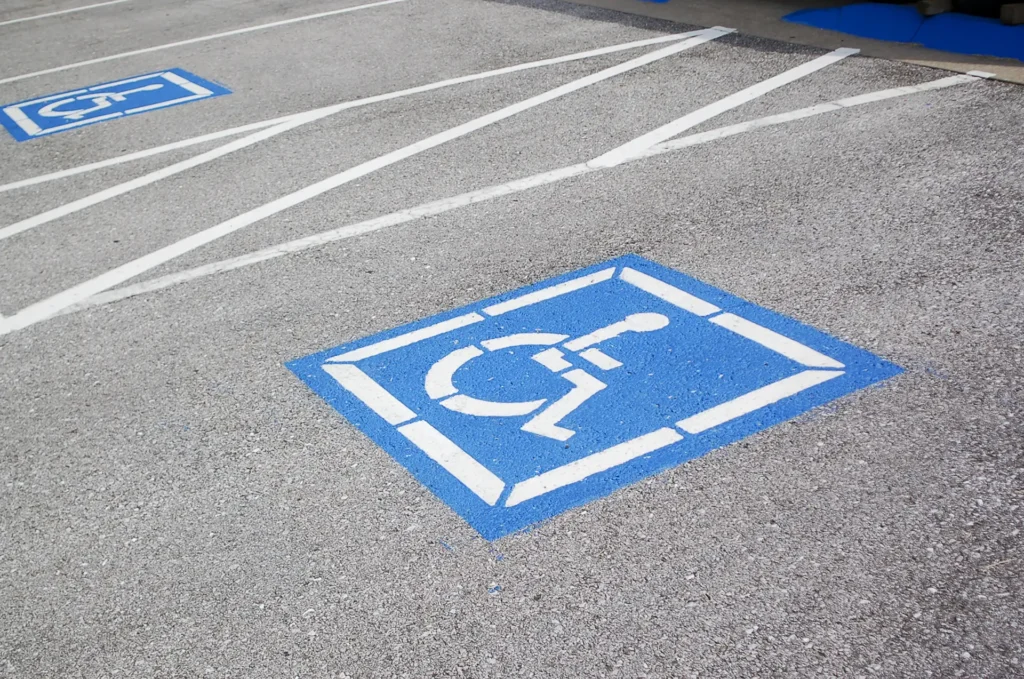
Ohio & Cincinnati-Specific Requirements
Ohio follows the basic federal rules but adds some extra requirements that affect businesses in Greater Cincinnati. Knowing these local details helps you avoid problems that could cost you money to fix later.
What Ohio requires for accessible parking:
- Regular car spaces: At least 8 feet wide with a 5-foot walkway next to it, or an 8-foot space with an 8-foot walkway.
- Van spaces: At least 11 feet wide with a 5-foot walkway, or an 8-foot space with an 8-foot walkway.
- Walkway areas: Must be at least 5 feet wide and run the full length of the parking space. Two spaces can share one walkway. Paint “NO PARKING” in these areas so people don’t park there.
- Ground surface: Must be level, solid, and not slippery. It can’t be steeper than about 2%.
- Where to put walkways: Can’t block driving lanes. For angled van spaces, set the walkway on the passenger side.
- Height clearance: At least 8 feet by 2 inches of clearance above parking spaces, walkways, and driving routes.
- Signs: Must show the wheelchair symbol. Van spaces need “Van Accessible” signs. Bottoms of signs must be at least 5 feet off the ground.
- Small lots: If you only have four or fewer parking spaces total, you don’t need tall signs, but you still need to reserve accessible spaces.
- Location: Put accessible spaces on the shortest path to your main entrance. Don’t make people go behind parked cars to get to the building.
- Fine amounts: Ohio requires signs to show a minimum $250 fine, though your city might require different amounts.
Accessible Layout Checklist
When you’re working on your parking lot paving project, follow these steps:
- Count your total parking spaces and figure out how many accessible spaces you need.
- Find the shortest path from the parking space to your main entrance.
- Measure everything, including space width, walkway width, slopes, and overhead height.
- Put up signs at the right height with the required fine amount.
- Paint clear lines, wheelchair symbols, and “NO PARKING” in walkways.
- Take photos of the finished work for your records.
How To Maintain ADA Parking Lot Compliance
Once you get everything set up right, you need to keep it that way. Regular upkeep prevents problems and protects your business from getting in trouble.
Important maintenance tasks:
- Repaint lines every 2-3 years when they start to fade and become hard to see.
- Check your pavement regularly for cracks, potholes, or areas that have sunk or shifted, and fix these issues quickly.
- Winter damage checks are especially important in Cincinnati because of freezing and thawing. Plan to touch up the paint in the spring.
- Keep signs in good shape; make sure they’re visible and properly mounted.
- Clear pathways of snow, leaves, or anything else that blocks access.
- Professional line striping provides ADA-compliant parking lot striping services using heavy-duty paint and proper techniques that last longer in Cincinnati’s harsh climate.

Cincinnati Asphalt Can Help With ADA Parking Lot Compliance in Greater Cincinnati
Achieving ADA compliance requires an understanding of federal regulations, Ohio laws, and Cincinnati’s specific requirements. Professional installation protects your business, whether it’s a medical center or a shopping plaza, while ensuring everyone can access your parking lot.
Cincinnati Asphalt provides complete ADA services throughout the area:
- Compliance reviews — to see what needs to be fixed/improved
- Design help — for new parking lots or renovations
- Professional painting — using materials that hold up to local weather conditions
- Proper sign installation — that meets Ohio requirements
- Ramp building — and other accessibility improvements
- Pavement repairs — to fix drainage, settling, and surface problems
Contact us today for your complimentary ADA compliance review and discover how professional installation ensures parking that accommodates everyone.

